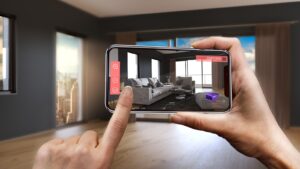Australia is the driest populated continent on the planet, and it also has the most varied rainfall of any continent on the planet. The great majority of Australians reside in coastal cities. Large-scale recycling was assumed to be difficult due to the high expense of infrastructure and pumps required to develop reclaimed water schemes because wastewater treatment plants were all located near the ocean. When Australia faced a decade of record-low rainfall, water utilities were given rigorous targets to increase the volume of reclaimed water. As a result, recycled water has been recognised as an acceptable non-drinking water source in a diverse portfolio of water sources to avoid climate risk.
To secure community support for recycled water, Australia was the first in the world to set national guidelines for its varied uses, ensuring public health and environmental protection. From a policy, legal, and technological standpoint, Australia currently serves as an excellent case study for how to maximise water recycling prospects.
Significance of Water Reuse for Australia
The sense of urgency has faded now that most of Australia’s eastern states are no longer in drought. Despite this, residents have embraced water conservation and the majority of non-potable recycling activities. Water recycling has become standard practice in most new buildings and urban redevelopments. In metropolitan regions, most agencies have changed their policies to allow decentralised alternatives like greywater recycling and rainfall tanks. The use of recycled water for firefighting, toilet flushing, and cooling towers has been substantially removed as a barrier to non-potable applications in metropolitan settings.
The Australian Water Recycling Centre of Excellence was formed by the Commonwealth government to conduct water recycling research and development in order to expand the usage of recycled water and overcome some of the technological barriers that now exist. If there is one lesson that Australians have learned over the last decade, it is that climate change in Australia has been swift and dramatic, and recycled water systems are now acknowledged as an important component of a broad portfolio of water supply sources to mitigate climate risks.
Benefits of Water Reuse
- Non-potable use: Agriculture, landscape, public parks, and golf course irrigation are all examples of non-potable (not for drinking) uses for recycled water. Toilet flushing, dust control, construction operations, concrete mixing, and artificial lakes are examples of non-potable applications.
- Potable use: Although the majority of water recycling systems are designed to address non-potable water demands, a number of them use recovered water for potable uses indirectly. These projects include recharging groundwater aquifers and adding recycled water to surface water reservoirs. Recycled water can be dispersed or injected into groundwater aquifers in groundwater recharge projects to supplement groundwater supplies and prevent saltwater intrusion in coastal areas.
- Environmental benefits: Water recycling has numerous environmental benefits in addition to providing a reliable, locally managed water supply. Water recycling can help us develop strategies to reduce water diversion from vulnerable ecosystems by providing an additional supply of water. Other advantages include reduced wastewater discharges and pollution reduction and prevention. Wetlands and riparian habitats can also be created or improved using recycled water.
Energy Savings: As the demand for water develops, more water is extracted, processed, and transported over long distances, which can be energy-intensive. If the local source of water is groundwater, as more water is extracted, the level of groundwater drops, increasing the energy required to pump the water to the surface. The energy required to transport water over greater distances or to pump water from deep within an aquifer is reduced when water is recycled on-site or nearby. The energy needed to treat water is also reduced when water quality is tailored to specific water usage.
Types of Reclamation Technology
Many factors affect the choice of water reclamation technology. Key elements include the type of water reuse application, reclaimed water quality objectives, the wastewater characteristics of the source water, compatibility with existing conditions, process flexibility, operating and maintenance requirements, energy and chemical requirements, personnel and staffing requirements, and residual disposal options, and environmental constraints. Decisions on treatment design are also impacted by water rights, economics, institutional issues, and public confidence.
Treatment techniques used in wastewater reclamation to meet reclaimed water quality goals can be separate or combined processes. Among these procedures are:
- Membrane Bioreactor Solutions combine biological, secondary, and tertiary wastewater treatment in one step. They have been used for over 25 years to not only treat wastewater to high effluent quality requirements but also to enable wastewater reuse.
- Ultrafiltration (UF) systems are designed to run downstream of a secondary wastewater treatment process, where no additional biological treatment is required, yet high-quality water is required. The system has a tiny footprint and may be installed almost anywhere, or it can be retrofitted to existing granular filter media.
- RO systems are commonly utilised after the water has been pre-treated to remove organics, suspended particles, and metals that could oxidise or precipitate on the membranes. Pretreated water is supplied to a RO for desalination and reuse or as part of a system to generate ultrapure water. Because it provides an excellent barrier to bacteria and pathogens and can remove pesticides while also producing water with low TDS, RO is chosen for indirect and direct potable water reuse applications.
- UV, Ozone, and Advanced Oxidation are disinfection technologies that are used as a final step in water reuse applications to minimise TOC and destroy any leftover organics.
- Electrodialysis Reversal is an electrically powered membrane technique that draws ions through membranes using an electric voltage. EDR is a self-cleaning, durable membrane system that is perfect for turbid wastewater due to its polarity reversal design. For water-scarce places, EDR technology offers the highest water recovery.
- Thermal Evaporation and Crystallisation Systems are critical for attaining zero liquid discharge and recycling all wastewater. There are always a few wastewater streams that are excessively saturated for standard physical/chemical and membrane technology in any wastewater reuse plant. These last challenging wastewaters are reduced to dry particles by evaporation and crystallisation, enabling for cost-effective disposal and squeezing out the last bit of pure water for maximum recycling and reuse.
Evolution of Wastewater Technology
A few major high-level industry transformations are now ongoing. What was once considered waste is now being re-evaluated for its worth, with the emphasis shifting to resource recovery.
Organic fuel, nutrients, and water are commonly found in wastewater streams. The industry is working to create methods that will allow for the efficient extraction of these valuable goods.
Municipal sewage has 2-4 times more energy content than the energy necessary to treat it. It is an underutilised resource on which existing technology and techniques fall short. However, by modifying present processes and implementing new disruptive technologies, wastewater treatment plants can be transformed into resource recovery factories capable of generating electricity. The following are examples of disruptive technologies:
- Enhanced primary treatment– Treating suspended organics takes a lot of energy. Facilities can minimise consumption while improving energy production by diverting them from secondary biological treatment to sludge treatment.
- Ultra-low-energy biological treatment -The most energy-intensive element of wastewater treatment is releasing water that passes stringent quality standards. To digest the organics and nutrients, the microbes in this process require oxygen.
- Advanced sludge treatment – The organics discarded by the biological process are treated using advanced anaerobic digestion, which converts sludge into biogas, which can then be converted to energy, as well as biosolids for agriculture or other useful uses.
- Energy recovery – Biogas produced during advanced anaerobic digestion is turned into electricity and heat by gas engines or recovered as natural gas for energy recovery.
A Water-Guaranteed Future
Planning, economic and financial assessments, and the proper design, operation, and management of wastewater reclamation, storage, and distribution facilities are all required for the successful implementation of wastewater reuse alternatives in a water resources management program. Wastewater reclamation and purification technologies have progressed to the point where it is now technically feasible to create water of virtually any quality, and progress is still being made. Multiple approaches are used in current water reclamation systems to reduce the health and environmental concerns associated with various reuse applications. A solid foundation for greater adoption of water reuse applications is provided by a mix of source control, sophisticated treatment process flow schemes, and other engineering controls.
Advancements in technology and a better understanding of health and environmental issues, it is now possible to produce reclaimed water of a certain quality to meet numerous water usage objectives. However, the ultimate choice to harvest reclaimed wastewater is based on economic, regulatory, and public policy considerations that reflect the demand and necessity for a reliable water supply as well as water pollution prevention in megacities.







